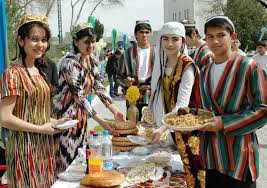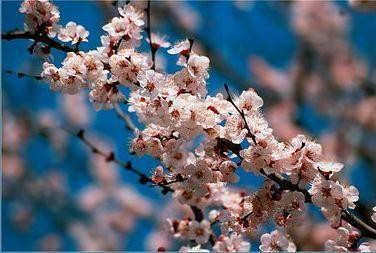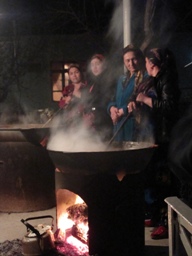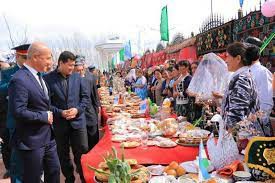11.2.6 Record and preserve cultural heritage. Deliver projects to record and preserve intangible cultural heritage such as local folklore, traditions, language, and knowledge. This can include the heritage of displaced communities.
The ancient sources that have reached us about the origin of Navruz show that it was widespread in Central Asia, Iran and Afghanistan during the Achaemenid period (6th century BC). In this sense, it can be assumed that the history of Navruz has 25-30 centuries.
Regardless of when and how Navruz was created, it was introduced on a comprehensive scientific basis, taking into account the laws of the universe and nature. For example, the entry of the Sun into the hamal sign, the lengthening of the day, the increase of light, the revitalization of nature are accepted as Navruz (Navruz means "new day"). According to the old solar calendar, Navruz coincided with the beginning of the month of farvordin (now March 22). This day was called "small Navruz" and it was believed that everything in nature will come true from this day.
Beruni gave valuable information in his book "Memorials from Ancient Peoples", in which he noted that the small holiday lasted until the sixth day of the month of farvordin. So, on the sixth day of the month of farvordin, he directly connects the essence of the "Great Navruz" with nature and writes about it: "... flowers from the first drop of spring rain at a time that serves him all year round. it comes at a time that lasts until it opens, from the flowering of trees to the ripening of fruits, until the generation of animals. Therefore, Navruz is a proof of the beginning and creation of the world. These thoughts once again prove that Navruz has been a holiday of nature and spring since ancient times. However, in history, interpreting the meaning of Navruz in different ways, some tried to promote it, while others tried to ban it. For example, during the Greek-Macedonian and Arab occupation, Navruz was banned, and it was not considered an official holiday in royal palaces, officials and religious circles. It should be emphasized that Navruz has changed its form in every class society in the past under the influence of tsars and religious ideology, but it has kept its basic essence. It is a real national holiday, celebrated with great festivities among working people.
Therefore, since ancient times, the people have had their own procedures for celebrating the holiday.
Pre-Islamic Navruz customs belonging to ordinary people are also noteworthy. On the day of the holiday, people give each other sugar and sweets (in the sense that your life will be sweet), sprinkle each other with water (in the sense that there will be plenty of water and a good harvest this year), and other customs are common. In the following centuries, customs such as cleaning yards, planting greenery and flowers, visiting parents and friends, and visiting the graves of the deceased became a part of Navruz holiday.
Navruz (Persian نوروز - "new day") is a spring holiday and the first day of the new year in Persian and Turkish peoples. The word "Navruz" means "new day" when translated from Persian. Navruz is celebrated in Iran, Central Asia and the Caucasus on March 21, and in Kazakhstan on March 22.
Navruz begins on the equinox (March 20, 21, or 22) as the beginning of spring in the Northern Hemisphere. Some nations associate the arrival of spring with the awakening of nature, and celebrate it as the beginning of a new year. Since ancient times, Azerbaijan, Uzbekistan, Iran, Afghanistan, Tajikistan and many other eastern countries welcome the arrival of spring and new year with holidays. March 21 is the first day of the official calendar in Iran and Afghanistan
On September 30, 2009, Navruz was included in the list of intangible cultural heritage by UNESCO, and on February 23, 2010, at the 64th session of the UN General Assembly, March 21 was announced as "International Navroz Day". This holiday is still widely celebrated among peoples.
Navruz includes various features of intangible cultural heritage due to its antiquity, wide geographical scope and different periods of its celebration. It is composed of many cultural forms and images based on the legendary Iranian king Jamshid, which means "Navruzi Jamshid", and similar legends.
Thera are local and traditional dances, performed by ethnic groups, Azerbaijani and Uzbek dances are performed in a proper manner, and cultural and linguistic features are combined in special folklore performances in this holiday. Among them are "Khan Bazi" and "Kusekh Galin" in Iran, "Kusa Kusa Khan" in Azerbaijan and Turkey, and "Bahor Khanim", "Navroz Baba", "Dehkan Baba", "Nasriddin" in Uzbekistan, "Aspak Bazi" (clown), "Laklak Bozi" in Kyrgyzstan, goats, horses, goats, wrestling, rams, cockfights, etc.. Experience, knowledge and craft, as well as renovation of home furnishings, making toys for children, jewelry made of precious stones and metals, especially for young brides, ornaments, ornaments are used at various stages of celebration. In general, these customs have a common value and uniqueness in the form of rich cultural diversity.
Determining dates is mainly based on ancient astronomical teachings. In the Middle Ages, the chronicle was mainly confirmed and corrected by famous scholars such as Abu Rayhan Beruni, Mahmud Koshgari and Omar Khayyam.
Every family and community has many rituals, traditions and cultural events to celebrate. One of the most important functions of the holiday is public gatherings, where cultural exchange and activities are combined with rituals. An example of this is special mass rituals involving water and fire.
.jpg)

.jpg)
.jpg)




